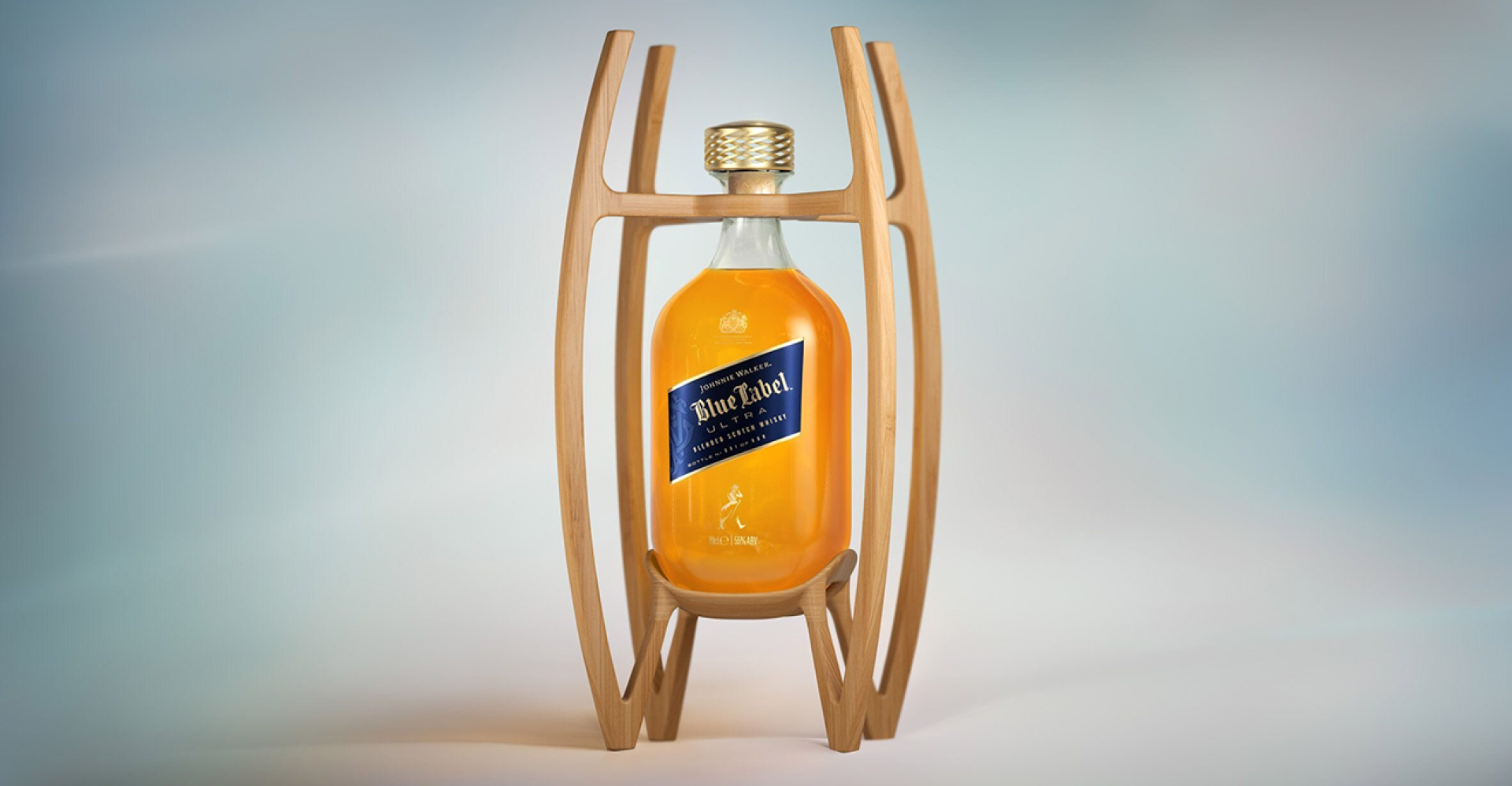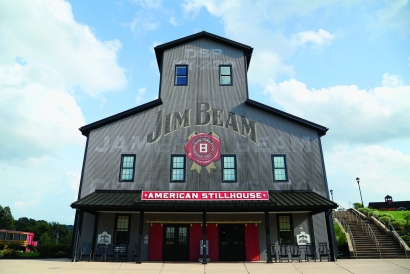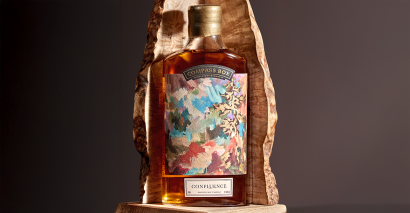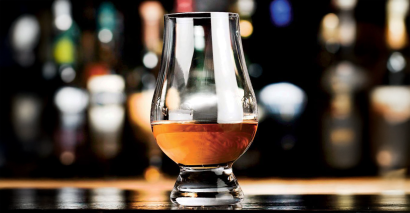
How Johnnie Walker Blue Made the World's Lightest Glass Bottle
Weighing 180 grams, the Blue Label Ultra bottle is a glimpse into the future of sustainable luxury spirits packaging
May 22, 2025 –––––– Sean Evans
In whisky packaging, luxury usually means heavy—think thick bottles with hefty stoppers that double as trophies on a shelf. Johnnie Walker wants to upend that thinking and embrace the notion that lithe is luxurious. Case in point: The new Johnnie Walker Blue Label Ultra bottle, at 6.3 oz. (180g), was just awarded the Guinness World Record for lightest 700 ml bottle. The stopper, made of hollowed-out aluminum, adds approximately 2.5 oz., for a total weight of 8.8 oz.
In other luxury sectors—like watches and supercars—less has always meant more. The lighter, the rarer. But spirits have been different. For fans of Blue Label’s famous square 1.8-pound (850g) bottle, a featherweight replacement might be a bit of a culture shock. Going from something as heavy as a paperweight to the Ultra, a glass bottle as light as six pencils, may take a minute to get used to.
How the Johnnie Walker Blue Label Ultra Bottle Was Created
The Ultra bottle is the result of a five-year quest by Johnnie Walker’s owner, Diageo, to find the most sustainable and lightest packaging possible while retaining the luxury aura of the franchise and its special blend of whiskies, which include ultra-rare Oban, Brora, Royal Lochnagar, and several ghost distilleries. That task fell to Diageo’s global design director Jeremy Lindley.
Strength and safety were Lindley’s priorities, but function needed to follow form. After learning that the naturally strongest shape for glass is the teardrop—the shape it naturally assumes when liquid—Lindley and his team made a teardrop with square sides, in a nod to the classic Johnnie Walker silhouette.
Prototypes were tested at progressively lighter weights until, in Lindley’s words, “it breaks, and then you go one notch heavier.” The final Ultra bottle resists heat, impact, and even hammer strikes, meeting the same safety standards as its 1.8-pound predecessor.
On May 1st, Johnnie Walker released 888 bottles of Ultra worldwide, each priced at $1,250. That includes a bamboo stand, because the bottle is too elegant (read: round-bottomed) to stand on its own.
Expect to See Lightweighting Across More Liquor Brands
Diageo’s experimented with sustainable packaging before—a 90% paper bottle for its Johnnie Walker Black in 2024— but Ultra’s new bottle is the tip of the spear for glass—especially for companies wishing to sell in Europe. The European Union’s new Packaging and Packaging Waste Regulation (PPWR) laws will soon dictate not only what packaging gets sold, but also how sustainable it has to be. So was Diageo’s project simply a head start on the PPWR’s 2030 deadline?
“You can say it's helpful that we’re getting ahead of the curve with all the legislation. But we’d started [Ultra] before [PPWR rules] were published,” says Lindley, adding that it’s important for Diageo to prioritize because it’s a “significant change for [all our liquor categories] to be thinking about minimum possible packaging weight.” In a bid to help, Diageo is offering the patent royalty-free, so any competitor can replicate the Ultra bottle.
When will lighter bottles start rolling out en masse? “There are complex manufacturing and supply chain processes—we have to make test molds, check safety,” says Lindley. “We’re probably about 12 months from those first products hitting the market as a result of the lightweighting program.”




